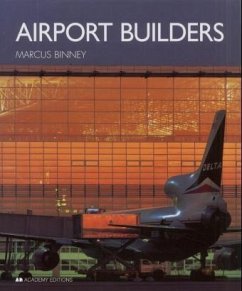Airports are among the most complex and intensively used buildings of our time, designed for tens of millions of passengers a year and handling, largely unseen, huge quantities of baggage and freight. Speed and security are at a premium, and in the 1990s a much greater emphasis has been placed on fast public transport connections to nearby cities. As terminals grow to accommodate more passengers and planes, there is a constant debate as to how to reduce walking times to and from the planes. With many passengers also spending longer periods between flights there is a new emphasis on passenger comfort and a determined attempt to make airports attractive and exiting places to spend time in. Rarely has a single building type provided such opportunities for fine, adventurous architecture around the globe. The airport terminals of the 1990s are engineering wonders, filled with natural light from above and with glass walls providing panoramic views. Their majestic internal spaces are worthy successors to the great train sheds of the nineteenth-century railway stations. Engineering and architecture play an equal role in creating vast, soaring internal spaces, exemplified by the new island airport at Kansai, Chek Lap Kok, and Seoul Inchon. Many buildings consciously seek to suggest metaphors for flight with soaring roofs and steelwork suggestive of fuselages or even the struts of early biplanes. While some terminals carry forward the twentieth-century tradition of a universal international modern style, others seek to give architecture a sense of place. The race to build spans the globe from San Francisco and Vancouver to Bangkok and Kuala Lumpur. This book illustrates the latest work of leading world architects such as Kisho Kurokawa, Norman Foster, Renzo Piano, Richard Rogers and SOM. It charts the phenomenal success of specialist builders in the field, such as the worldwide practice of Aéroports de Paris, and examines the new generation of European terminals.
Bitte wählen Sie Ihr Anliegen aus.
Rechnungen
Retourenschein anfordern
Bestellstatus
Storno

